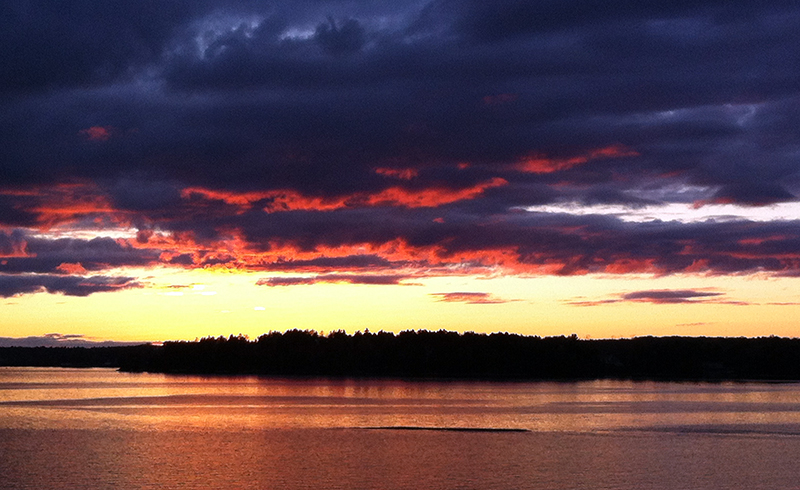Wherever they live, people notice the subtle changes that mark the turn of the seasons; sometimes consciously, sometimes by feel, one way or another everyone senses the turn. Moving from the heart of a big city to a sparsely peopled seacoast means adjusting to new indicators — particularly when it comes with a change of almost four degrees of latitude and five of longitude. Up here, without the Phillies and Rita’s Water Ice to announce the arrival of Spring, we look to the ducks.
Our winter ducks are the Buffleheads. They arrive in late fall, and all winter long (except when Harpswell Sound freezes over) they can be seen in pairs and groups, cruising up and down in front of our house and diving to forage on the bottom for bite-sized crabs. No skill is required to identify them. The males are almost comically configured, with disc-shaped heads that look like the work of a third-grade math class learning to color the quarters of a circle in black and white. They leave only when Spring really gets going — not for the Eastern Shore or other waterbird collection points, but for Hudson Bay. If you’re a Bufflehead, Maine is like Jacksonville or Scottsdale: your southern getaway destination.

The calendar wasn’t much of a tool for tracking the seasons this year. Full Nor’Easters in three consecutive weeks of March offered a pretty good imitation of the dead of winter when we should have been teased with moments of Spring. The ducks were a more reliable indicator. You know winter is really over when the Buffleheads thin out and the Eiders arrive. That happened all of a sudden last week. Suddenly the larger Eiders are cruising past and Buffleheads are few and far between.
If we had any doubt that the spring migration is now in full swing, flocks of Black Scoters and Surf Scoters both passed through this week. In winter we’d see an occasional solitary Goldeneye or Red-Breasted Merganser, but now the traffic is really heating up. We’re not sure whether we more enjoy the names or the ducks themselves, but the migratory bird show is an unexpected pleasure. And for now at least, they’re our best marker for the change of seasons.
MW

